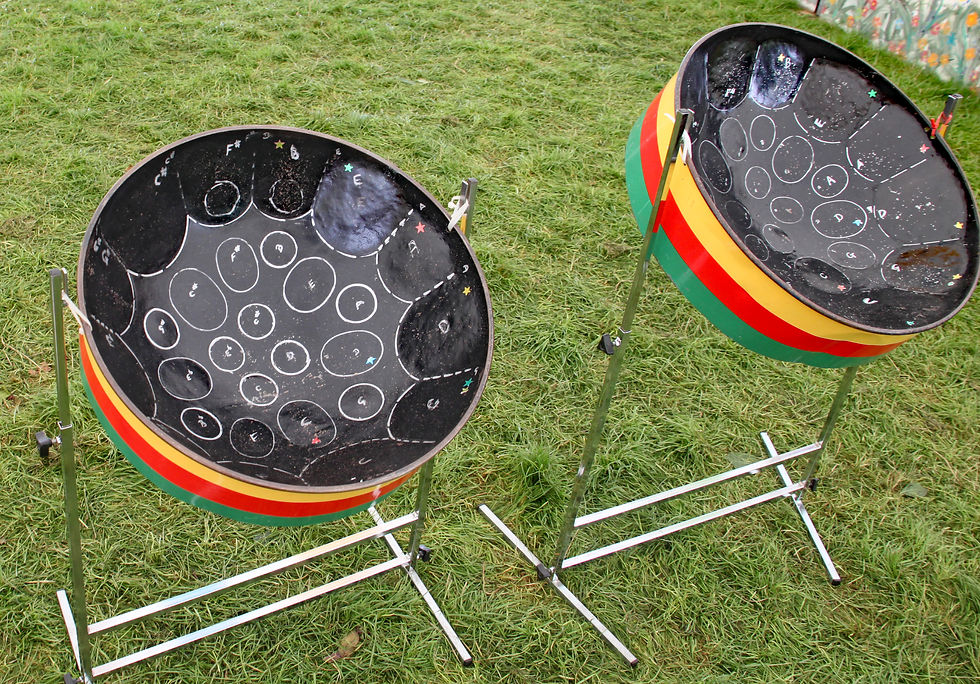Grenada Music and Dance
- spiceisledigiconte
- Aug 29, 2021
- 2 min read
Updated: Jul 31, 2023
Grenada has a rich culture of music and dance, inherited from the days of slavery. Our culture is infused with African heritage brought by the African slaves from West Africa. The influence of West African can be found in the musical instruments, musical rhythms used in song, and the body movements displayed in dance.
Musical Instruments
The drum is a musical instrument that has its roots deep within West African heritage. The beating of the drum was used to communicate messages among slaves on the sugar plantations. Today, the drum is used to accompany dances such as the Big Drum dance done in Carriacou or the Belle dance. The Tivoli drummers of the parish of Saint Andrews' is well-known for playing the African drums.

Other musical instruments that can be found in Grenada is the Steelpan. Steelpan music originated in Trinidad and Tobago. The sweet sound of steelpan music can be heard on the street during Grenada's Carnival celebrations. There are several steel pan bands in Grenada such as Flow Comancheros, Republic bank Angel Harps and Pan Wizards.

Music Genres
The main music genres found in Grenada is Soca and Calypso. Soca music is an upbeat music that inspires listeners to jump, wave, and move their hips. Lord Shorty of Trinidad first coined the word - Soca. Calypso music is slower paced, and the content is often a satire of an issue that the singer wants to bring light to. Calypso originated from the slaves on the plantation, and the rise of calypso competitions began in the days post-slavery. There are both soca artists and calypsonians on island. King Ajamu and Scholar hold the most Calyso titles in Grenada. Boyzie holds the most Soca titles in Grenada. Soca music and Calyso music feature throughout the year, but is most popular during the months of July and August for the Carnival season.
Dance
Popular traditional dances in the tri-island state of Grenada, Carriacou and Petite Martinique include the Big drum dance, Belle dance and Quadrille dance. There is also maypole dancing. All dances have historical roots in either African slavery or British colonization. The teaching of dance is passed down from generation to generation, with the older generations teaching the younger ones.

Credits: Flickr
Comments